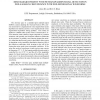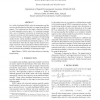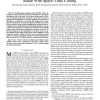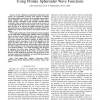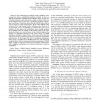ICASSP
2011
IEEE
13 years 6 months ago
2011
IEEE
The diversity gain of a multiple-input multiple-output (MIMO) system adopting the Neyman-Pearson (NP) criterion is derived for a signal-present versus signal-absent scalar hypothe...
ICASSP
2011
IEEE
13 years 6 months ago
2011
IEEE
In a widely distributed MIMO radar, the transmitters and the receivers are distributed so that they see a target from different aspects. The scattering from the target is therefor...
ICASSP
2011
IEEE
13 years 6 months ago
2011
IEEE
In this paper we consider the exploitation of spatial timefrequency distribution (STFD) in multiple-input multipleoutput (MIMO) radar systems. STFD has been found useful in solvin...
ICASSP
2011
IEEE
13 years 6 months ago
2011
IEEE
In this paper, we consider the problem of direction finding in multiple-input multiple-output (MIMO) radar based on focusing the transmitted pulse energy within certain spatial s...
TSP
2010
13 years 9 months ago
2010
Abstract--Multiple-input
TSP
2010
13 years 9 months ago
2010
Detection and estimation problems in multiple-input multiple-output (MIMO) radar have recently drawn considerable interest in the signal processing community. Radar has long been a...
TSP
2008
14 years 2 months ago
2008
The concept of multiple-input multiple-output (MIMO) radars has drawn considerable attention recently. Unlike the traditional single-input multiple-output (SIMO) radar which emits ...
TSP
2008
14 years 2 months ago
2008
In the traditional transmitting beamforming radar system, the transmitting antennas send coherent waveforms which form a highly focused beam. In the multiple-input multipleoutput (...
ISCAS
2008
IEEE
14 years 9 months ago
2008
IEEE
—The multiple-input multiple-output (MIMO) radar concept has drawn considerable attention recently. In the traditional single-input multiple-output (SIMO) radar system, the trans...
ICASSP
2008
IEEE
14 years 9 months ago
2008
IEEE
—MIMO (multiple-input multiple-output) radar is an emerging technology which has drawn considerable attention. Unlike the traditional SIMO (single-input multiple-output) radar, w...
